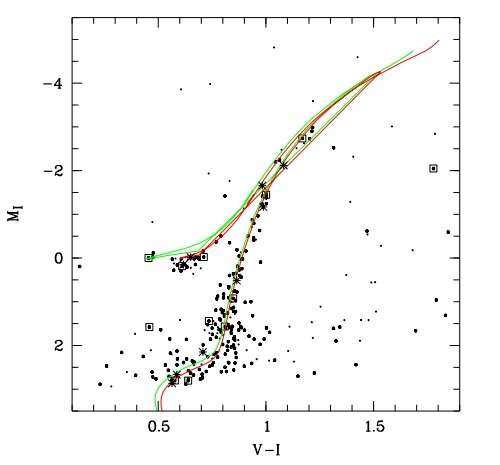August 10, 2020 report
Globular cluster Palomar 3 probed by Russian astronomers

By conducting deep photometric and medium-resolution spectroscopic observations, Russian astronomers have investigated Palomar 3, a distant galactic globular cluster. Results of this observational campaign provide more insights into the properties of this cluster, which could be essential in improving our understanding of its origin. The study was published July 31 on arXiv.org.
Globular clusters (GCs) are collections of tightly bound stars orbiting galaxies. Astronomers perceive them as natural laboratories enabling studies on the evolution of stars and galaxies. In particular, globular clusters could help researchers to better understand the formation history and evolution of early-type galaxies, as the origin of GCs seems to be closely linked to periods of intense star formation.
Located some 300,000 light years from the Earth and about 313,000 light years from the galactic center, Palomar 3 (Pal 3 for short) is a GC discovered as part of the Palomar Sky Survey in the 1950s. It is one of the most distant galactic globular clusters. Pal 3 is estimated to be about 10 billion years old, has a half-luminosity radius of around 60 light years, and a metallicity at a level of approximately -1.7.
A group of astronomers led by Margarita Sharina of the Special Astrophysical Observatory (SAO), Russia, took a closer look at this distant GC. They performed deep photometry of Pal 3 with the Very Large Telescope (VLT) in Chile and medium-resolution spectroscopy using the CARELEC spectrograph on the 1.93-m telescope of the Haute-Provence Observatory in France.
"We have attempted to improve our knowledge of the origin of Pal 3—one of the most distant globular clusters—by analyzing various observational data available to us—direct VLT frames, integrated spectra of stars in the central region of the cluster, and catalog information about the object's kinematics," the astronomers wrote in the paper.
The observations allowed Sharina's team to derive fundamental orbital parameters of Pal 3. The researchers found that the most distant point on its orbit is about 1,100 light years from the center of the Milky Way and the cluster has approached the galactic center to a minimum distance of some 230 light years only once. The orbit was found to be inclined by approximately 72 degrees, while the orbital eccentricity was calculated to be about 0.5. The astronomers noted that the orbital parameters of Pal 3 point out to a probable extragalactic origin.
Based on the data from VLT and CARELEC, the astronomers estimated that the half-luminosity radius of Pal 3 is approximately 58 light years, while its radial velocity was measured to be at a level of about 83.4 km/s. According to the paper, the distance to Pal 3 was confirmed to be approximately 299,600 light years, its metallicity was measured to be -1.4, and its age is estimated to be 11 billion years.
However, although the results of the study provided important information regarding the properties of Pal 3, the astronomers emphasized that more accurate data on the proper motions, ages, and chemical compositions of the cluster stars are needed in order to explain the origin of this GC.
More information: Sharina et al., The Stellar Population and Orbit of the Galactic Globular Cluster Palomar 3, arXiv:2007.16163 [astro-ph.GA] arxiv.org/abs/2007.16163
© 2020 Science X Network





















